Introduction: In this article, Melissa Davenport Berry writes about a spooky murder mystery that happened in Salem, Massachusetts, in 1830 and shocked the country. Melissa is a genealogist who has a blog, AnceStory Archives, and a Facebook group, New England Family Genealogy and History.
It’s that time of year when thousands of tourists travel to Salem, Massachusetts, to get spooked – and one way to scare yourself is taking the Haunted Salem Night Tour. On the list of haunted houses is the Gardner-Pingree house, the scene of the chilling murder in 1830 of Joseph White, a wealthy old ship captain, that caused a shock wave of sensation around the country.
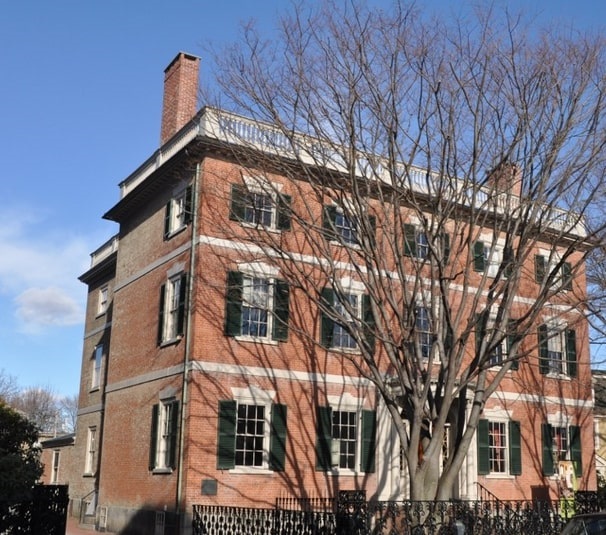
The case oozes an eerie mystery – as does its unsavory suspects – which fueled literary works by Edgar Allen Poe and Nathaniel Hawthorne.
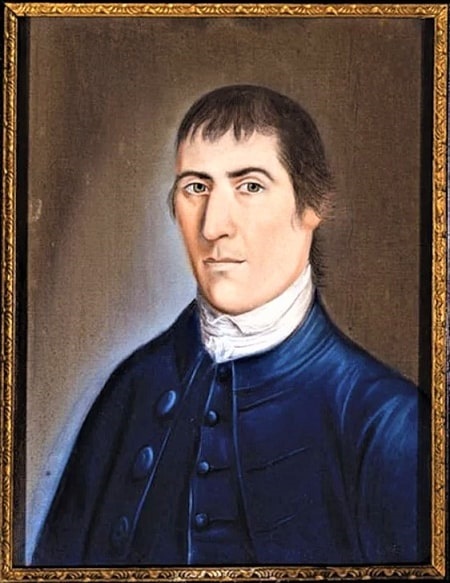
GenealogyBank’s Historical Newspaper Archives have quite a collection of articles about the murder. I found one account told by Boston Herald reporter Roy Atkinson in 1967, who provided a colorful summary.
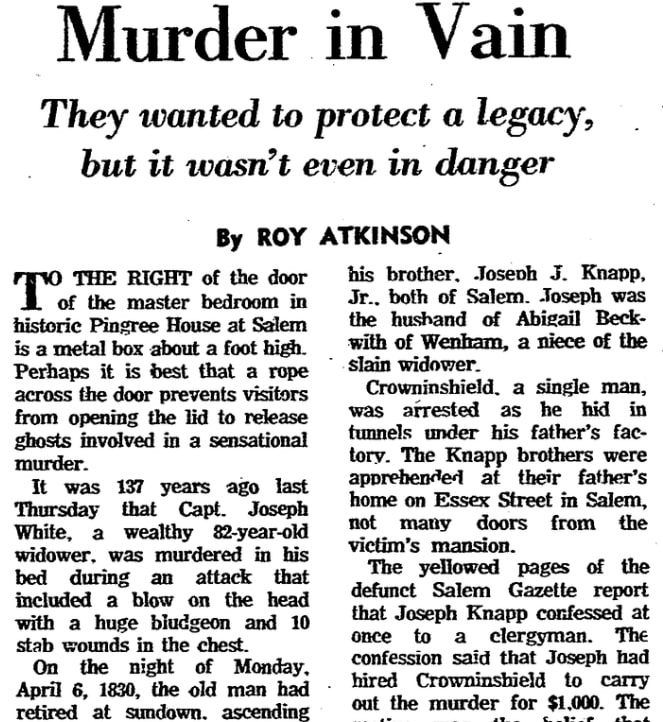
This article reported:
“On the night of Monday, April 6, 1830, the old man [Capt. White] had retired at sundown, ascending the winding, picturesque stairs to the second-floor bedroom where the metal box beside the bed was believed to contain his will.
“The next morning Cap’n White was found in the bed ‘enveloped in blood,’ as the long-gone Salem Gazette described the scene. Nothing in the room, including jewels and money, apparently had been disturbed.
“Footprints were found in garden mud behind the house and there was a plank, taken from the garden gate, resting against the house. It was believed the plank had been used by the murderer to reach a window.”
The article then reported this tantalizing tidbit:
“There were no solid clues until a letter came into the hands of Salem authorities from an ex-convict in Maine [signed by ‘Charles Grant,’ real name Palmer].
“The writer explained that, since a reward had been offered, he wanted to reveal that three men earlier had attempted to involve him in the crime. The ex-convict vowed he had refused and fled back to his home in Belfast [Maine].”
This letter came about because of the notoriety of the case and the reports circulating in newspapers throughout New England.
Here is one such article, from the Maine newspaper Weekly Eastern Argus. It has a bold headline, “Barbarous Murder!” and described the crime done in a “most shocking and inhuman manner.” The article described the rewards being offered “for the detection of the murderer”: $500 by Salem’s selectmen and $1,000 by the heirs of Captain White.
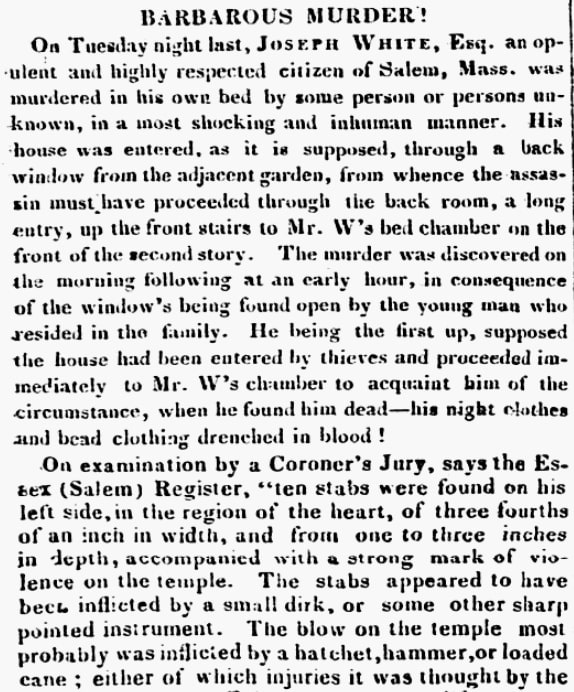
This article concluded:
“As to the motives which could have induced the perpetration of this horrid deed, all is mystery and uncertainty. ‘Shadows, clouds, and darkness rest upon it.’ It appears certain that plunder was not the object, as there was money and other valuable property in the bed chamber and other parts of the building through which the murderer passed, and nothing was taken. What other motive might have actuated the wretch who could deliberately, and in the most barbarous manner, take the life of a gentleman in the eighty-second year of his age, who had for years been almost secluded from the world, having long since retired from the active cares of his commercial pursuits, in which he was for a long series of years distinguished, remain to be divulged by the operations of an overruling providence, which seldom permits such dark and desperate deeds to be long hidden in mystery.”
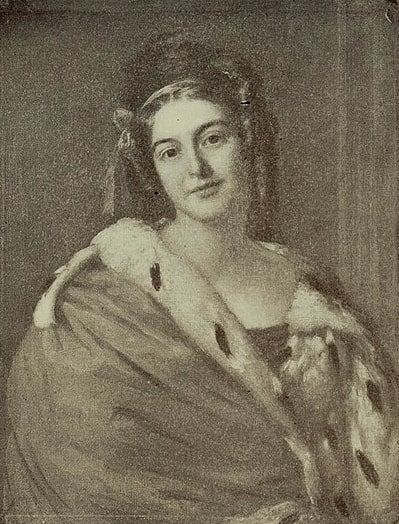
The principal heir was Stephen White, nephew to Capt. White. He was a state senator and brother-in-law of Joseph Story, Associate Justice of the U. S. Supreme Court. A letter written by Joseph Story to U.S. Senator Daniel Webster (who would serve as prosecutor for the state when the eventual murder trial was held) revealed the inheritance at stake:
“You are aware he died childless and that his principal heirs are Mr. Stephen White and my sisters’ children.” [His sister was Harriet Story, wife of Stephen White, and their children who were heirs to Capt. White were: Harriet (became wife of James William Page); Ellen Marion (became wife of John Benjamin Joy); and Caroline (became wife of Daniel Fletcher Webster – son of Daniel Webster).]
“It is altogether the most mysterious and dreadful affair that I ever heard of… not the slightest trace has yet been found by which to detect the assassins (for I am satisfied there was more than one), and we are yet in a darkness rendered still darker by the utter defect of every conjecture. I have been obliged to go to Salem several times and everything there seems to be in inextricable confusion. Mr. White left a will. He has given legacies to his relatives, but the bulk of his fortune goes to Mr. White, who will get from 150 to 200 thousand dollars [roughly $4.5 to $5.9 million today]. There are my nieces who will receive about $25,000 each [about $745,000 today].”
Stay tuned for more!
Note on the header image: Photo: Gardner-Pingree House, 128 Essex Street, Salem, Massachusetts. Image from the Frank Cousins Collection, Phillips Library, Peabody Essex Museum, Salem, Massachusetts. Courtesy of Digital Commonwealth.
